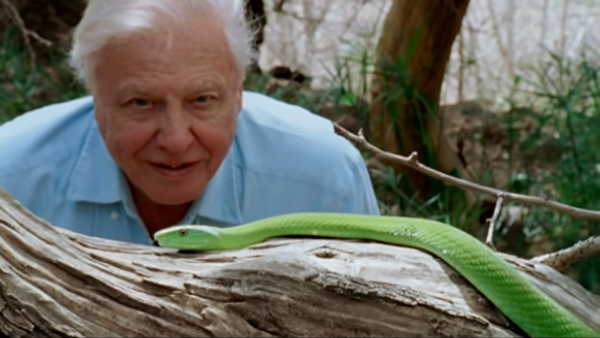Sir David Attenborough is undeniably an icon. With a career spanning almost 70 years, he has traveled all over the world to show its natural wonders to the rest of humanity. But while previous generations may have seen his work to marvel at nature’s beauty, his most recent film tells a horrifying tale of ruin and extinction. Unlike most of his nature documentaries, Sir David Attenborough: A Life on Our Planet is as much about humanity as it is about nature — and it is his stern warning about the terrible future that awaits our planet if we don’t change our ways.

The film begins in the city of Pripyat, the ghost town left behind by the Chernobyl disaster in 1986. As Attenborough explores the empty city, he regards it as a microcosm of the entire planet, a symbol of destruction resulting from irresponsible human action. But, although the footage of empty streets and abandoned buildings is certainly haunting, the message doesn’t sink in just yet. That comes later.
Attenborough then takes us back to his childhood and his early career — a departure from his usual work, which focuses on species of wild animals and plants as subjects. In this one, he himself is a subject. The documentary isn’t solely about him, but it is framed around his life and career — and with Attenborough having turned 94 this year, it certainly has plenty to work with. It also highlights just how much the planet has changed within just one lifetime.
For the first half of the film, Attenborough tells of the wonders he witnessed as he flew, sailed, and trekked the world’s jungles, oceans, deserts, and poles. He also describes nature’s sufferings and decline in the hands of humanity. The Earth has experienced stability for thousands of years, but that has now been disrupted. Wild populations are decreasing; forests are shrinking; polar ice caps are melting — all due to unrestrained human activity. “Human beings have overrun the world,” he says, in his distinctive, trustworthy voice, but with a tinge of uncharacteristic solemnity. “There is little left for the rest of the living world.”
Then, he takes us even further, into the next decades, to show us what lies in wait. Burning forests. Total loss of the polar ice caps. Dying fish populations and coral reefs. Infertile, overused lands. Much of the planet rendered uninhabitable. By the end of the century, a sixth mass extinction event. This is when the message sinks in. As he shows us the future, he pulls no punches. And, at the back of the viewer’s mind, the existence of such footage leaves behind a harrowing message: this is already happening.
But he doesn’t stop there — because it’s not enough to show us what the consequences of our actions are. We need to know how to save our planet from ruin. And this hope is what completes the documentary, makes it whole. He tells us of certain countries’ imitable efforts, like Japan’s plateauing population, Morocco’s dependence on renewable energy, Palau’s sustainable fishing industry, the Netherlands’ efficient farming technologies, and Costa Rica’s growing forest cover. And as the viewer watches this, as with the dreadful future they saw just minutes before, they realize that these promising answers are also happening right now. A brighter future is possible.
The film ends where it began: Chernobyl. Free from human intervention, nature has returned to Pripyat, taken over by flora and fauna living in relative peace. Just as it represents the destructive capacity of humanity, it also symbolizes nature’s ability to heal. “With or without us, the natural world will rebuild,” he says. “This is not about saving our planet. It’s about saving ourselves.”
Nobody else could have done this film like Sir David Attenborough. In his 94 years, he has seen what nature has to offer, what humanity is responsible for, and what is yet possible — both good and bad. If we haven’t heeded the warnings about climate change, we should heed it from him. By making this documentary, full of both dread and hope, and telling the story of his life, of nature, and of humanity, he makes his strongest statement yet.
Before the credits roll, A Life on Our Planet leaves with one final message: “This film is David Attenborough’s witness statement. Who else needs to see it?” There is no other answer — we all do.

